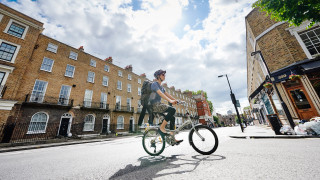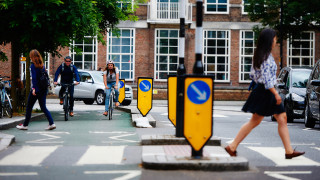British Cycling campaigns manager Martin Key considers how the Comprehensive Spending Review will impact on the government’s cycling investment strategy and commitment to double the numbers of journeys cycled.
Following meetings with the transport minister and Chris Boardman’s ‘Tour of Copenhagen’, where Robert Goodwill MP said he was inspired to “re-double our efforts”, hopes were high for what the Comprehensive Spending Review would deliver for cycling investment.
Despite the Chancellor referencing the government’s commitment to cycling, very little new money was announced. The £300 million mentioned in his speech is mostly money previously announced by Nick Clegg MP back in 2014 and has already been allocated to just eight cities and Highways England.
We had hoped for a lot more but this is not, in itself a barrier to progress. Ultimately it is the responsibility of the Department for Transport to fund the cycling investment strategy not the Chancellor, however yesterday’s publication ‘Setting the first cycling and walking investment’ gives little indication of where it would come from.
The #ChooseCycling campaign is about getting government to accommodate cycling into its transport strategy and not treat it as a charity. This means that it should be integral to what the Department for Transport does day to day, like roads, rail and aviation, and that cycling should benefit from sustained investment.

Existing budgets should be ‘cycle-proofed’ to get best value from public investment. HS2 must include sufficient cycle parking and a network of routes provided in the budget. The government’s road building programme, investing over £15 billion, should be cycle-proofed so that all new roads accommodate cycling and links with a wider network.
Over £61 billion will be invested by this government in transport over the course of this parliament. If just 5% of that was invested in cycling we could begin to deliver the cycling revolution called for by the Prime Minister. Instead just 0.5% has been earmarked for cycling.
There are also very large sums of money available to local authorities which can be spent on cycle infrastructure. Over £12 billion in the Local Growth Fund, £475 million for major local transport development and a £300 million transport development fund. Some of this may find its way to the odd bit of cycle lane but is likely to result in the same stop-start infrastructure because it is not part of a coherent strategy.
The government’s cycling investment strategy hangs in the balance. The Department for Transport was hoping for a Christmas gift from the Chancellor to deliver its strategy but it did not receive anything. Now it is up to transport ministers to secure the necessary funding to deliver a credible cycling investment strategy. We will find out what is available when the ‘Statement of Funds Available’ is revealed early next year.













